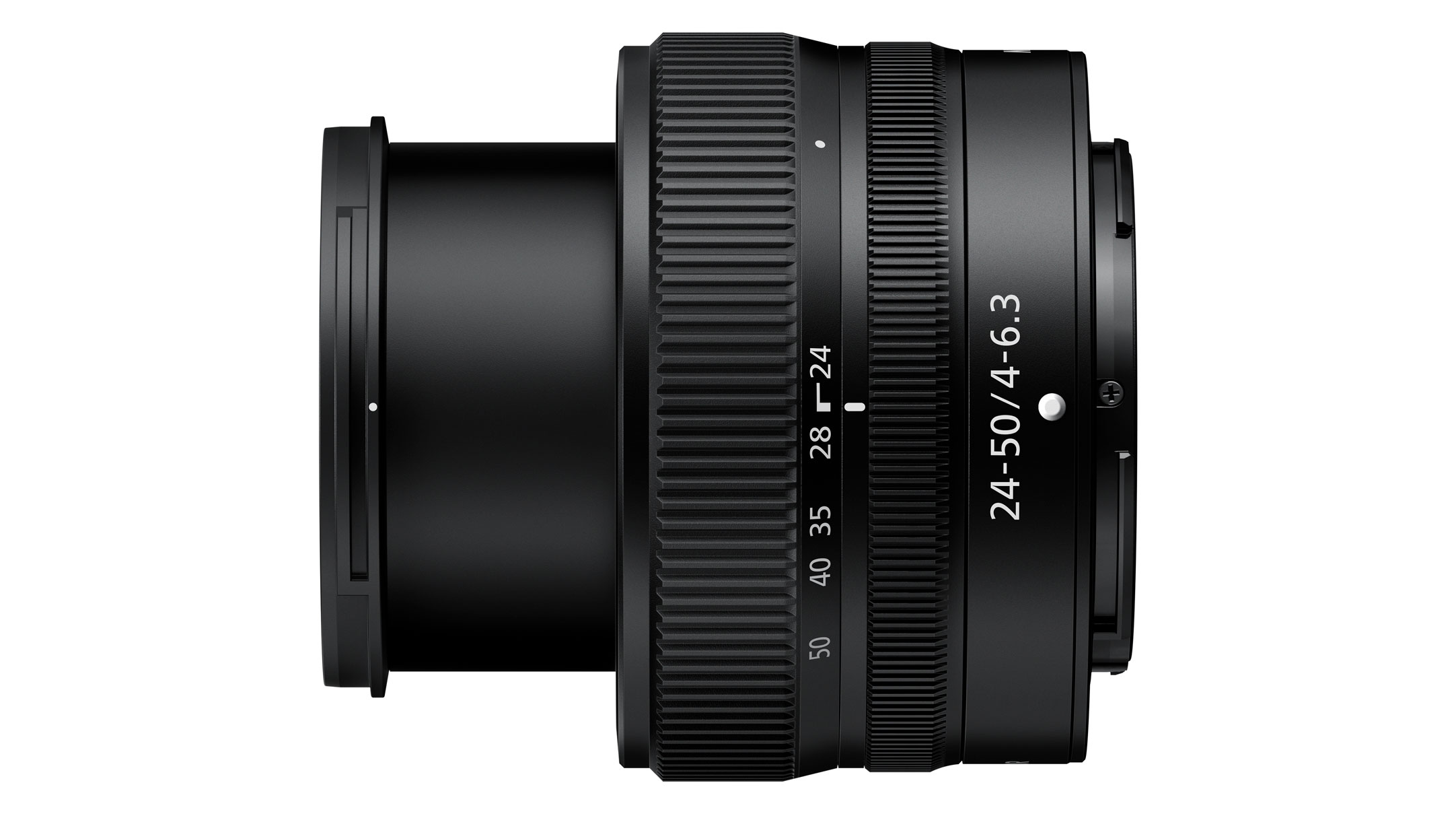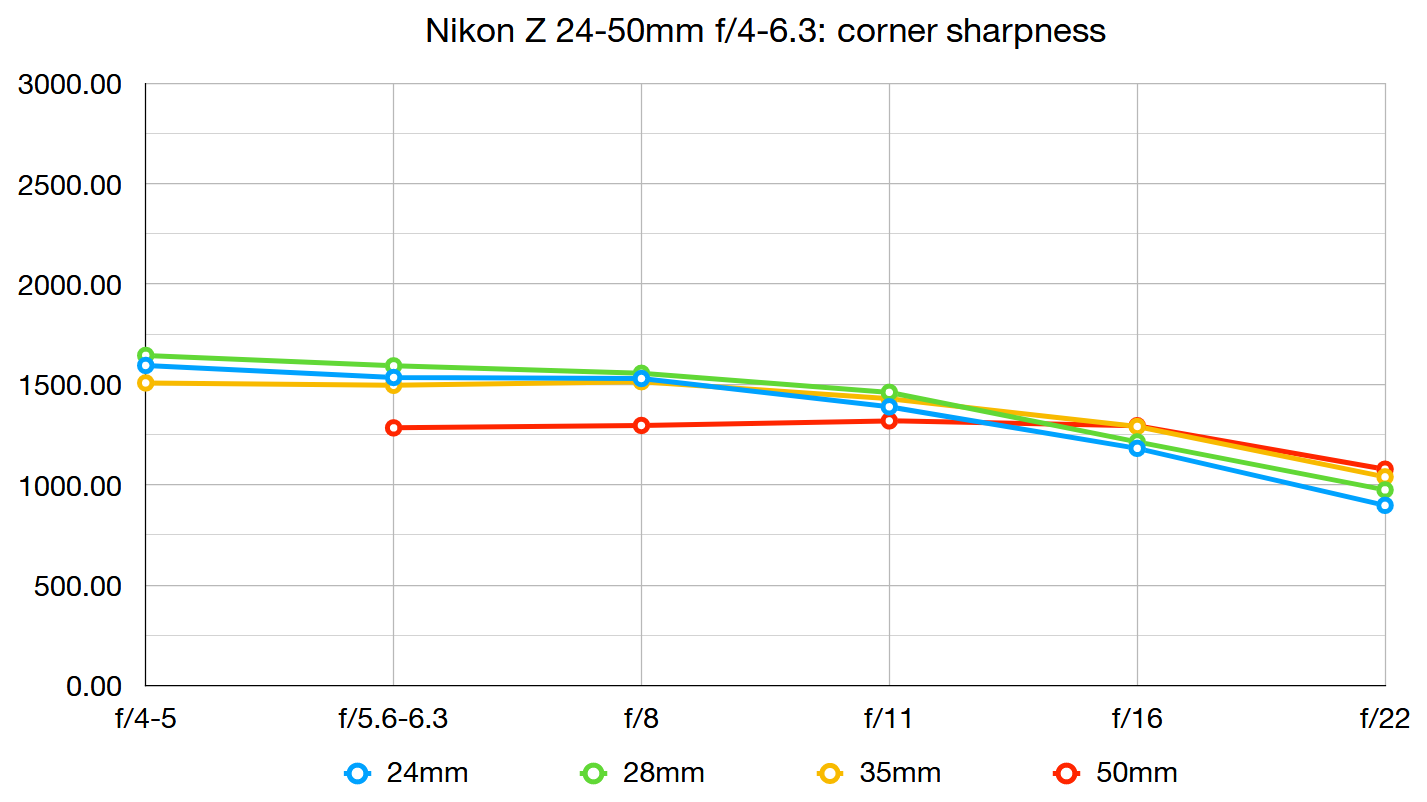Digital Camera World Verdict
Full frame cameras mean bigger lenses. If you want long zoom ranges and fast maximum apertures, you have to accept big, heavy lenses. If you don't want a big, heavy lens, you have to give up on both. And that's exactly what the Nikkor Z 24-50mm f/4-6.3 does. It is certainly compact, but there's a heavy price to pay in zoom range and maximum aperture. We like it and we don't like it, and we are as conflicted as you probably will be.
Pros
- +
Very compact for a full frame lens
- +
Quite good optical performance
Cons
- -
Very limiting 2x zoom range
- -
Not fast, especially at 50mm
Why you can trust Digital Camera World
Full frame cameras give the kind of image quality every photography fan aspires to, but inevitably the cameras grow larger. Even so, camera makers do a great job of keeping them compact – and Nikon has done especially well with the Nikon Z5, which is the camera the Nikkor Z 24-50mm f/4-6.3 is bundled with – though you can also buy this lens on its own.
But while cameras can be made smaller, it seems that lenses can't. Electronics can be miniaturised, but the laws of physics – and optics – can't. It's not about cleverness and design, it's about immutable scientific principles. We want cameras that are smaller than ever and lenses that are better than ever, and that creates a pull in opposite directions.
More than most mirrorless camera makers, Nikon is very conscious of this and has produced Nikkor Z lenses for size and portability, not just specs and performance. The Nikkor Z 24-50mm f/4-6.3 takes this to the extreme, sacrificing zoom range and maximum aperture for size.
Has it gone too far, or is this still a useful and important lens?
Specifications
Mount: Nikkor Z
Full frame: Yes
Autofocus: Yes
Image stabilization: No
Lens construction: 11 elements in 10 groups
Angle of view: 84-47 degrees
Diaphragm blades: 7
Minimum focusing distance: 0.35m
Maximum magnification ratio: 0.17x
Filter size: 52mm
Dimensions: 73.5x51mm
Weight: 195g

Key features
Undoubtedly, the key feature of this lens (on a positive side) is its compactness. Where most full frame camera kit lenses are at best quite big and at worst (with pro lenses) pretty huge, this one is very compact. For anyone with a long memory, this is how cameras with walkaround standard lenses used to be.
There are two substantial downsides. One is the very limited 2.1x zoom range. Effectively, you get a good wideangle at one end of the zoom range and a standard angle of view at the other. Most kit lenses can also double as a short telephoto or 'portrait' lens, but not this one.
The best camera deals, reviews, product advice, and unmissable photography news, direct to your inbox!
The other downside is the maximum aperture. A 24mm f/4 isn't so bad, but a 50mm f/6.3 is harder to accept. You need to be very forgiving to accept that short zoom range and big maximum aperture drop at the same time.
This is the price of an ultra-compact full frame kit lens. Nikon isn't alone here – the super-compact Sony FE 28-60mm f/4-5.6 is equally constricting.
Build and handling
The Nikkor Z 24-50mm f/4-6.3 is certainly compact when it's retracted. Of course, you have to un-retract it (extend it) to use it, but that's easy too. It's a good deal longer when extended for use, but a simple turn of the zoom ring retracts it for putting away, so that's not an issue.
This does feel like a very well made lens. The controls are smooth and firm with no play. In addition to the zoom ring, there’s also a control ring, which is normally used for manual focusing but can be assigned other functions when autofocus is engaged, such as exposure compensation.
However, there's no MF/AF switch on the barrel, so you need to use the camera menus to switch modes. There's also no VR switch because this lens does not have VR, and relies on the in-body stabilisation of the Nikon Z cameras.

Lab data
Sharpness:
The sharpness scores in the two graphs below are produced by shooting a monochrome test chart covered in multiple sharp boundaries between black and white. This image is then assessed by specialist software, with the extent of blur on the contrast boundaries at the centre, mid and edges of the image converted into a spatial frequency value to determine how many line widths per picture height the lens is capable of resolving. A higher spatial frequency corresponds to a greater number of finer lines over a given distance that the lens can resolve - this number is the sharpness score.
Centre sharpness is very good for a standard zoom, though perhaps not quite as high as we'd hoped, given the lens' modest focal range. For reference, the Z 24-70mm f/4 S scores noticeably higher at each equivalent focal length, though this is a much pricier and larger S-line lens.
But impressively, the Z 24-50mm beats the Z 24-70mm f/4 S when it comes to corner sharpness. This is more due to the latter being somewhat mediocre rather than the 24-50mm being especially sharp, but it's still a respectable showing for such a modest and compact zoom lens.
Fringing:
The chromatic aberration scores are calculated using the same chart we use for measuring sharpness. This time the processing software assesses the sharp black-white contrast boundaries and determines the width in pixels of the colour fringe that divides black from white - the larger the width of the fringe, the larger (and worse) the fringing score.
There's some minor fringing at shorter focal lengths, but this becomes almost unnoticeable at 35mm and above. You're very unlikely to spot any aberrations at any focal length in real-world use.
Distortion:
At the top and bottom of our lens test chart are horizontal black bars that run its full width. A lens that bulges these lines towards the edges of frame produces barrel distortion, the degree of which is indicated by a negative score. Shrinking (pincushion) distortion, usually produced by a telephoto lens, produces a positive score. The higher the number - positive or negative - the greater the distortion. A score of zero indicates no distortion.
A lens with this focal range will inevitably produce some visible distortion, especially at the short end, unless in-camera corrections are applied, which is exactly the case here. Distortion correction can't be fully disabled in Nikon Z cameras, so we can't assess the lens's true optical distortion. Therefore, the distortion results here can't be directly compared to other similar lenses that don't use digital distortion compensation.
Verdict
Full frame cameras mean bigger lenses. If you want long zoom ranges and fast maximum apertures, you have to accept big, heavy lenses. If you don't want a big, heavy lens, you have to give up on both. And that's exactly what the Nikkor Z 24-50mm f/4-6.3 does. It is certainly compact, but there's a heavy price to pay in zoom range and maximum aperture. We like it and we don't like it, and we are as conflicted as you probably will be.
You needn't worry about the optical performance, which is very good. The question is whether a 2.1x zoom that's this slow will really be of much use to you.
Read more:
• Nikon Z5 review
• Best Nikon cameras
• Best Nikon Z lenses
• Best standard zooms
• Best pancake lenses

Rod is an independent photography journalist and editor, and a long-standing Digital Camera World contributor, having previously worked as DCW's Group Reviews editor. Before that he has been technique editor on N-Photo, Head of Testing for the photography division and Camera Channel editor on TechRadar, as well as contributing to many other publications. He has been writing about photography technique, photo editing and digital cameras since they first appeared, and before that began his career writing about film photography. He has used and reviewed practically every interchangeable lens camera launched in the past 20 years, from entry-level DSLRs to medium format cameras, together with lenses, tripods, gimbals, light meters, camera bags and more. Rod has his own camera gear blog at fotovolo.com but also writes about photo-editing applications and techniques at lifeafterphotoshop.com





